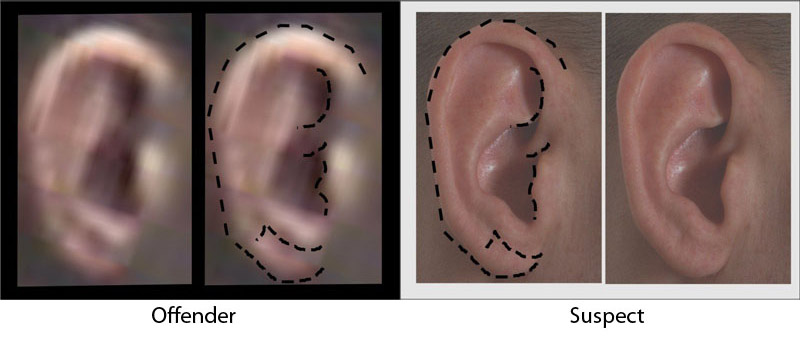Ear analysis
A word in your shell-like about the crime solving powers of the ear!
Forensic imagery and analysis experts, FVS, are often asked to comment on and compare faces for court using highly specialised Facial Mapping techniques. But one of the most interesting and accurate methods of human identification is the ear — which is every bit as unique as a fingerprint.
Bill Platts, director of FVS, said. "Ear prints are seldom used in evidence because it is comparatively rare to find these at a crime scene, as opposed to fingerprints or DNA. However, with CCTV evidence becoming more common, it is more likely that imagery of the ear will be visible, and this is where FVS can help in identifying, or discounting, a person involved in a criminal investigation.
"The use of ear shape to identify people has been practiced since the 1880s. The most in-depth analysis into ear prints was done by Alfred Iannarelli — a CSI police officer in the United States — who through 38 years of research and application in earology found that from a sample of thousands of ears he examined directly, using photographs or latent ear-print impressions, no two were found to be identical.
"This was even taking into account the mirror-effect, where an individuals' left and right ears were found to differ in form, much like fingerprints. This uniqueness held true in cases of identical and fraternal twins, triplets, and quadruplets.
Bill Platts added: Studies have revealed that individuals who know the subject in question are shown to have a 60-70% recognition rate when shown a photograph of their full face alone. This increases to over 90% when the individual is also able to see an ear.
"The morphological comparison of the ear has been used in a number of recent court cases and successfully argued by FVS in court. As well as performing a facial comparison, FVS can offer a scientific comparison of the appearance and morphology of the ear where visible.
"In this case, below, West Midlands Police needed to prove that an offender and suspect were one and the same after a burglary. Available CCTV footage didn’t show a full facial view, but there was a good shot of the ear.
"FVS carried out a comparison between the burglar and the suspect, with images taken from prison, which showed a number of similarities both in aspects of its shape and how those features interrelated. A conviction we secured with the help of this evidence."

